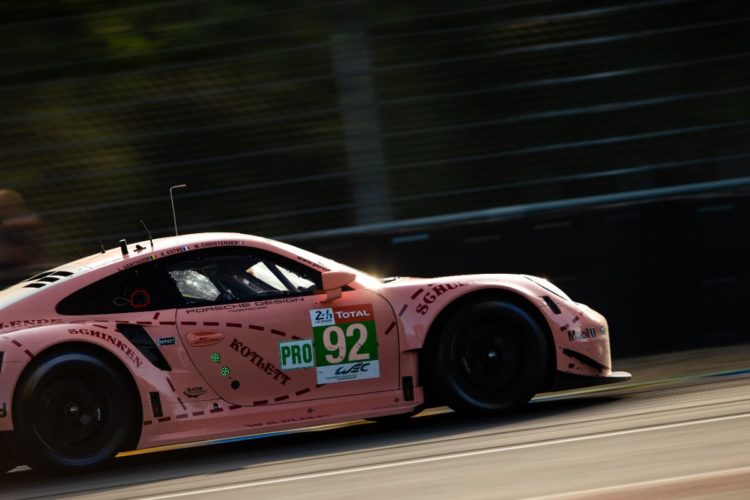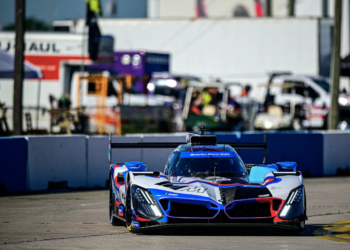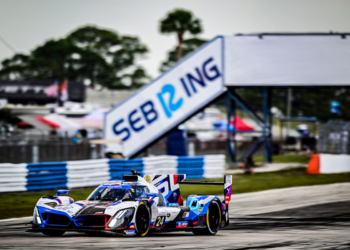As regular racing news has come to a halt in the wake of the ongoing COVID-19 pandemic, Motorsport Week is going to dive into endurance racing’s rich history to cover some of the sport’s stories. One of the biggest manufacturers currently active in endurance racing, Porsche, has already done this multiple times over the past two years. By outfitting its Porsche 911 RSR in historic liveries on both sides of the Atlantic, where they quickly became fan favorites. Which liveries have we seen over the years, and what are they based on? Let’s take a closer look.
Der Sau
Let’s start with the best known of Porsche’s retro liveries: The Pink Pig. One of the two liveries Porsche unveiled ahead of the 2018 edition of the 24 Hours of Le Mans. It instantly captured attention by its bold colour scheme. Driven by Michael Christensen, Kevin Estre and Laurens Vanthoor, the trio took the Pink Pig to instant success by taking a resounding victory in GTE Pro, one of two victories the pair of Christensen and Estre would take en route to the title during the Super Season.
It remains a fan favorite with fans and drivers alike, and is often mentioned first today whenever Porsche’s retro liveries are brought up in conversation. Yours truly still has a scale model of the car today.
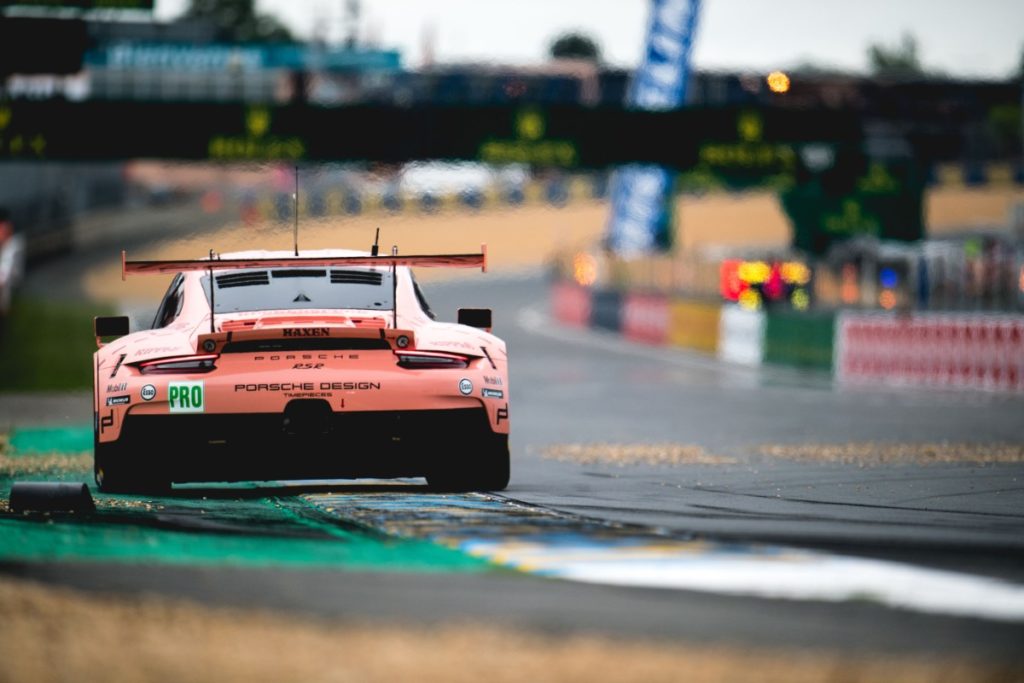
The pink colour scheme is a throwback to the original Pink Pig, which was the 917/20 that competed in the 1971 edition of the French endurance classic. The car, which also went by the less flattering nicknames of Big Bertha and Truffle Hunter, was a one-off edition of the fearsome 917 created in cooperation between Porsche and French firm SERA. The goal of the project was to combine the characteristics of the short-tailed 917K and longer 917LH in an attempt to create the ultimate 917.
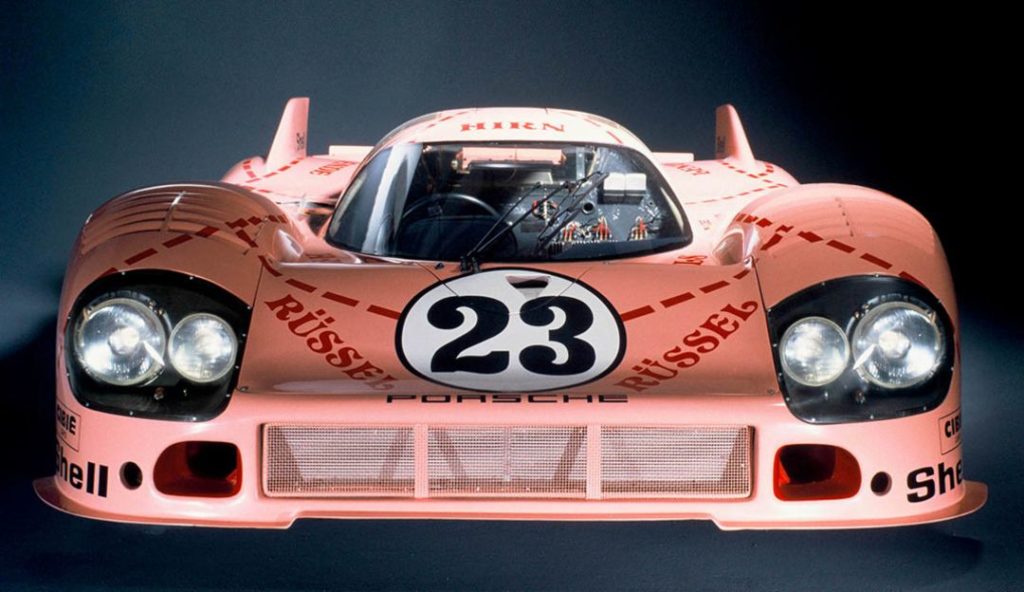
As a result, the car had an extremely wide body, much wider than any 917 previously created, but the car’s track width remained the same. This was all in attempt to combine the short-tail’s stability with the low drag and mind-bending straight line speed of the long-tailed car, which was capable reaching speeds approaching 400 km/h (250 mph) on La Sarthe’s long Mulsanne Straight. This was in a time before the straight featured the chicanes we know today.
The car was driven in the race by Reinhold Joest, who went on to win Le Mans multiple times with his Team Joest outfit, and Willi Kauhsen. The car, although untested, proved quick instantly but would not see the chequered flag as it crashed out while holding fifth place. Porsche would still see glory, as Gijs van Lennep and Helmut Marko (remember him?) would take the win in a Martini-backed 917K.
Smoking is bad for you, kids
Porsche’s other throwback livery from the 2018 edition of Le Mans arguably doesn’t need much introduction. The blue, white, red and gold of tobacco firm Rothmans is one of the most recognizable colour schemes in all of motorsport. It’s been seen on Williams’ Formula One machinery, during which time it carried both Damon Hill and Jacques Villeneuve to world championship glory.
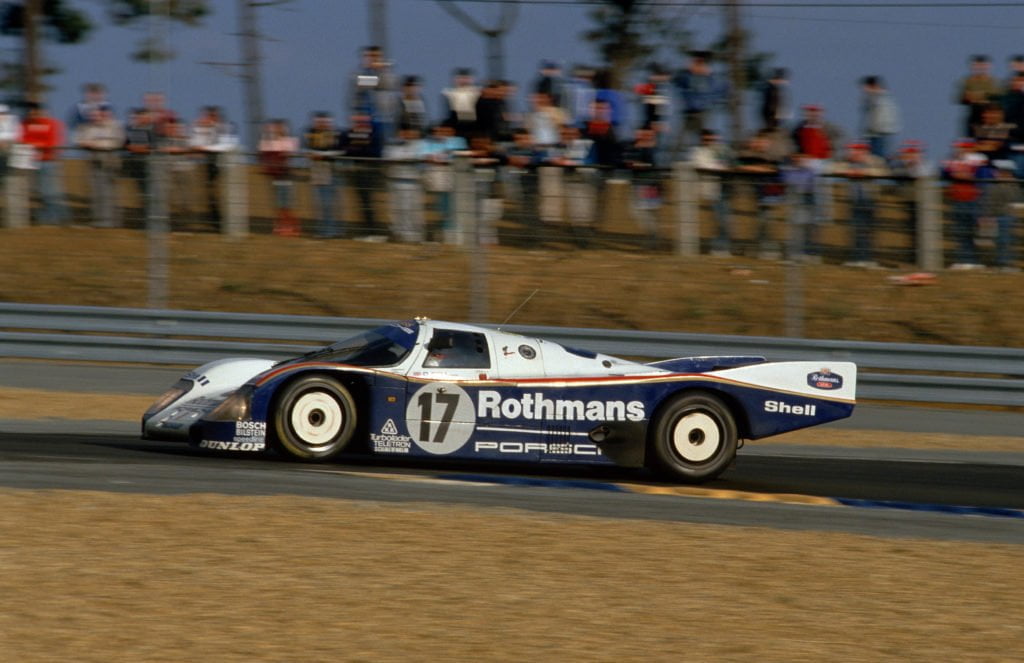
But perhaps most of all, the Rothmans livery is most synonymous with Porsche and its utter dominance during the infamous Group C era of international sportscar racing. It first appeared on the 956C, scoring two overall wins in 1982 and 1983 before the 962C was introduced in late 1984 and adding two more victories in 1986 and 1987.
The livery also appeared on several on Porsche’s rally cars, including the 959 that took victory in the 1986 Paris-Dakar rally, as well as the lesser known 961, a car based on the 959 that raced at Le Mans during the same years as the 962’s victories.
In 2018, the car carrying the iconic colours was driven by the full-season duo of Gianmaria Bruni and Richard Lietz and joined by Fred Makowiecki. It proved a successful affair for Porsche, as the #91 Porsche 911 RSR took pole position in GTE Pro and finished second behind the #92 Porsche of team-mates Estre, Christensen and Vanthoor.
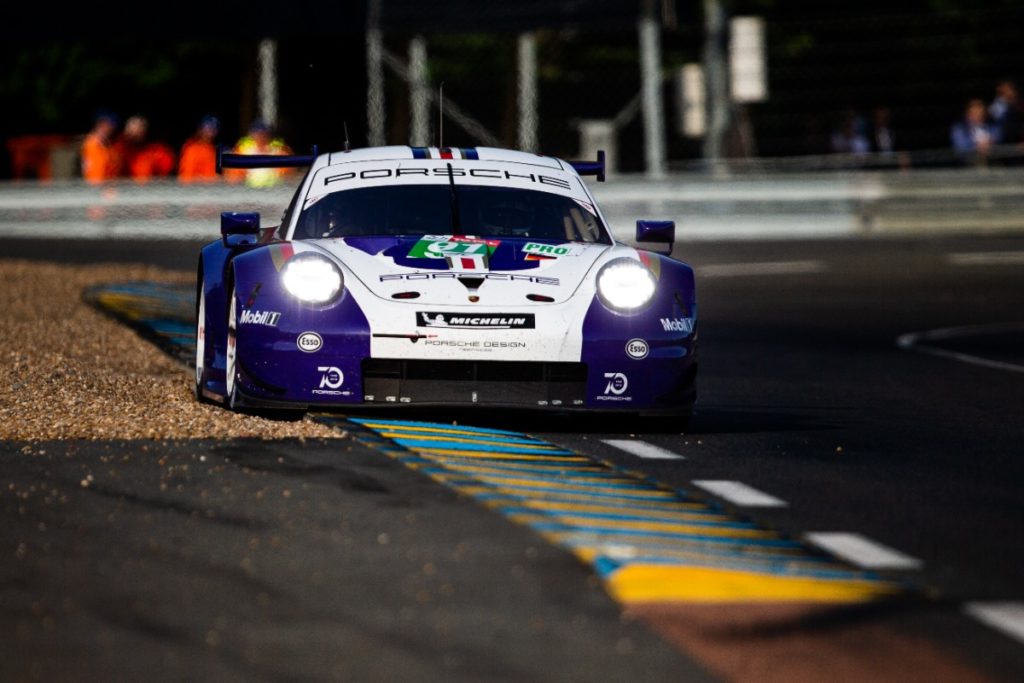
No flips this time
Porsche’s retro liveries once again appeared at Petit Le Mans, the final round of the 2018 IMSA Weathertech Sportscar Championship and once again, the livery proved a direct throwback to the race at hand. In 1998, Porsche competed in the inaugural Petit Le Mans event, which was an initiative by the late Don Panoz to bring sportscar racing back to the United States in full glory. The German manufacturer showed up with the 911 GT1 and took pole in the same year it took yet another overall Le Mans win with the same car.
The story of the 911 GT1’s creation is an interesting one, which came about as the BPR GT series, subsequently the FIA GT Championship was created with GT1 as its top category, which originally featured cars based on road-going machinery, as every car competing had to also be sold as a road car.
While the majority of manufacturers created the road car first and then developed a motorsport version, Porsche found and exploited a loophole in the regulations which essentially meant that they flipped the script and purposefully created the racecar first and turn it into a roadcar later. That road car became known as the 911 GT1 Straßenversion, which remains incredibly rare today.

The actual GT1 racer wasn’t much of a GT car, but rather a 962 that was made to resemble the 911, coupling the road car’s front chassis with the rear chassis and engine derived from the 962. It proved a mighty package, but like a few other cars of the time, it had a tendency to take to the skies as Yannick Dalmas was seen flying through the air at the 1998 Petit Le Mans, although he escaped unharmed.
Back in 2018, the Porsche 911 RSR and retro liveries once more proved a winning combination as Patrick Pilet, Nick Tandy and Fred Makowiecki took the #911 car to GTLM victory after starting from fifth place. The #912 of Earl Bamber, Laurens Vanthoor and Mathieu Jaminet started third but finished sixth after a late drive-through penalty. At least they didn’t do a backflip this time.
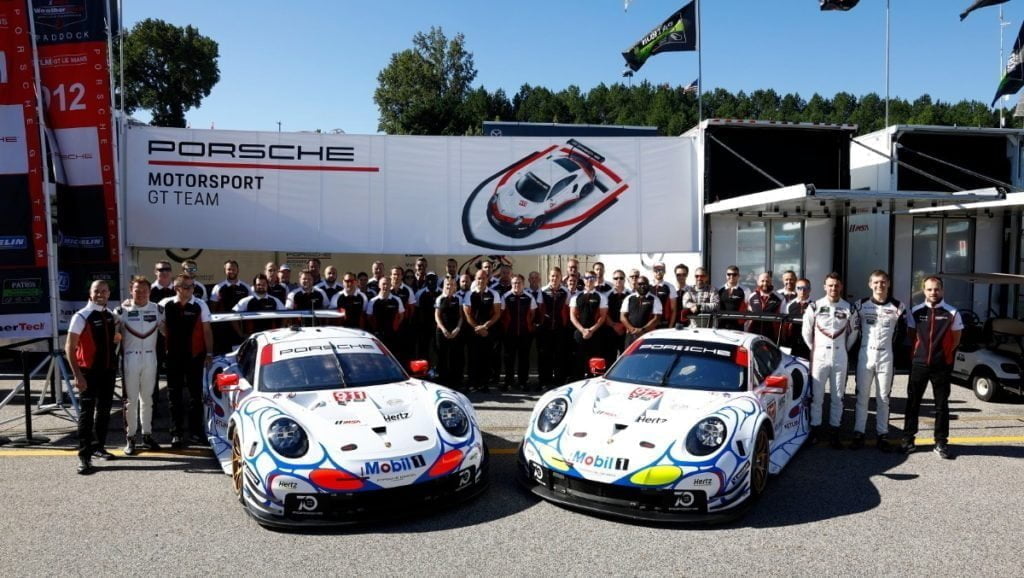
Make Hurley proud
By the time 2019 rolled around, retro liveries became more common, especially in IMSA. The North American organization celebrated its fiftieth anniversary last year, which resulted in a fair few manufacturers and teams reimagining their classics from days gone, including Ford and Acura. Porsche, not to be outdone, showed up with its cars sporting one of North American endurance racing’s most iconic designs: Brumos.
The white, red and blue is a direct throwback to the Brumos Racing outfit that scored a multitude of wins throughout several decades, with 15 titles and 48 race victories, racing the likes of the 911 Carrera RSR and 935/77, and later, the Porsche-powered Riley Daytona Prototype.
Almost as synonymous with Brumos as the colours is the number 59, which saw Hurley Haywood capture two IMSA championships. Peter Gregg, who joined Haywood en route to Daytona wins in 1973 and 1975, secured an impressive 41 victories with the #59 car.
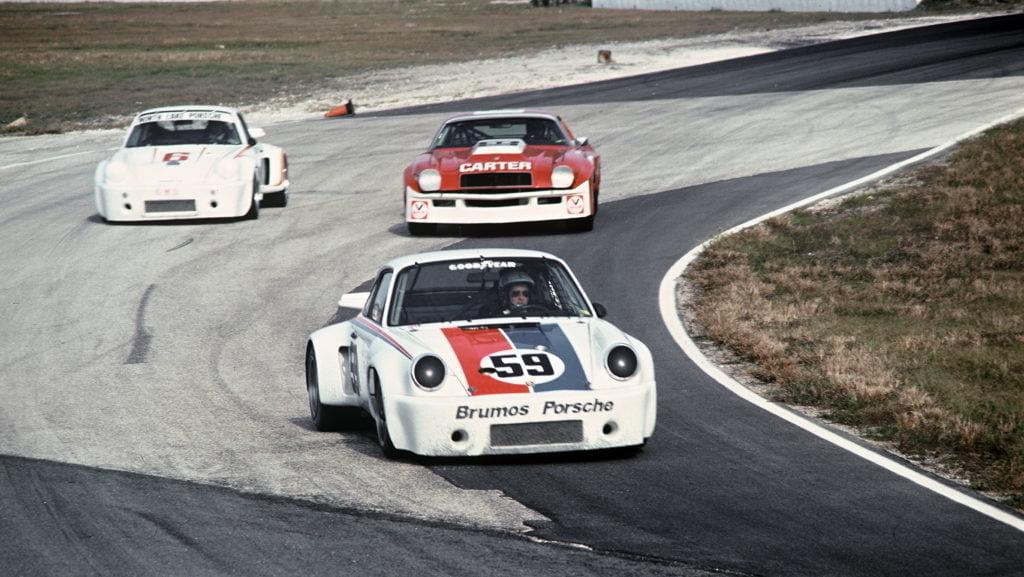
The Brumos livery enjoyed the longest tenure of all throwback colour schemes Porsche has used. It debuted at the Rolex 24 at Daytona, where it kicked off Porsche’s landmark campaign with a pole position and podium finish in GTLM. It reappeared for a clean sweep at the Twelve Hours of Sebring before being absent at Long Beach and Mid-Ohio.
Porsche then brought it back for the 24 Hours of Le Mans in June, where its two North American cars once again sported the livery in a race where Hurley Haywood was the Grand Marshal. Earl Bamber, who took the #93 911 RSR to third in GTE Pro, spoke to Motorsport Week about the livery at the time, saying:
“It’s obviously really special having the Brumos livery. Especially with Hurley being the grand marshal is something quite special to close the loop for him. He was kind of emotional seeing the cars for the first time.”

After Le Mans, the colour scheme returned to competition in IMSA at Watkins Glen and Canadian Tire Motorsport Park (where Porsche won both races in GTLM), before a different colour scheme made an appearance at the final round of the championship.
A refreshing beverage
The most recent retro livery from Porsche came at last October’s Petit Le Mans, where the previous 911 RSR had its final race as a factory car. In order to end IMSA’s 50th anniversary with a bang (or should that be a sizzle?), Porsche teamed up with beverage giant Coca-Cola to unveil a red-and-white livery that was a direct throwback to the Bob Akin Racing Porsches of the 1980s.

Bob Akin Racing ran Porsche machinery in IMSA competition during the 1980s, with the Coke-branded Porsche 962C becoming a particular fan favorite. Akin, joined by Jo Gartner and legendary German driver Hans-Joachim Stuck, achieved the team’s greatest success in 1986 by winning that year’s Twelve Hours of Sebring.
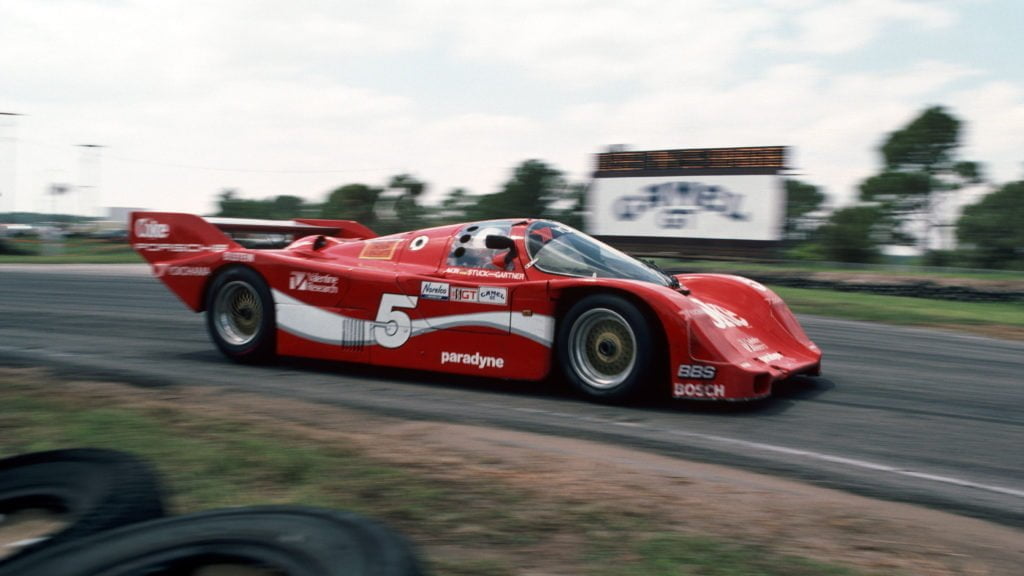
An impressive legacy
It’s clear from the examples listed above that Porsche values its heritage and history highly, and these retro liveries have only added to the Stuttgart manufacturer’s illustrious history as the track record of these historic liveries is not one to be taken lightly.
While sporting these throwback liveries, the Porsche 911 RSR has taken class victories at the 24 Hours of Le Mans, Twelve Hours of Sebring, Six Hours of the Glen and Petit Le Mans. Further scrutiny reveals that Porsche did not finish off the podium in each race using a heritage livery prior to last October’s Petit Le Mans.
While the current situation means we’ll likely have to wait for another throwback livery from Porsche a little longer than we had hoped, here’s hoping we see plenty more in the future.

